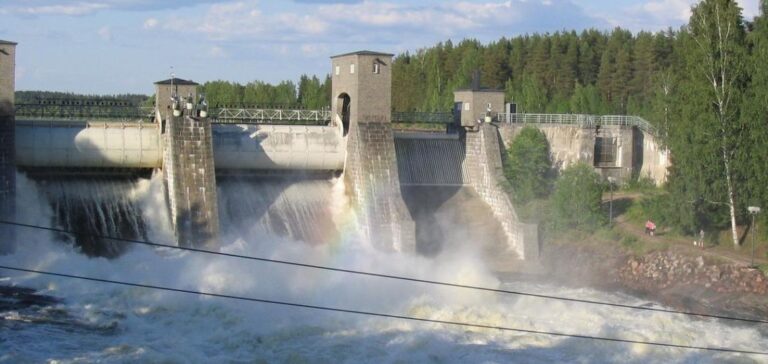Kemijoki Oy, a major supplier of hydroelectric power and regulation in the northern and eastern regions of Finland, has successfully retrofitted two of its hydroelectric plants with generator vacuum breakers, making them SF6-free. This initiative is part of the company’s strict environmental diversification program and complies with the latest global Dual Logo standard.
Retrofit solution provided by ABB’s electrification services team
Both plants, 11 MW Matarakoski and 11 MW Kelukoski, had been operating with their original SF6-based HPA breakers for about 30 years. The lack of available spare parts also became an issue, making it necessary to find a cost-effective solution that minimized downtime. A complete overhaul of the switching system operation was not financially viable, and downtime had to be kept to an absolute minimum because of the vital role of the plants in the country’s security and power generation.
ABB’s electrification services team provided a retrofit solution that reduced the downtime from weeks to just hours, ensuring that power was not interrupted. The team specified a custom 12-kV version of the MV VD4G family of vacuum circuit breakers, which eliminates potentially dangerous short-circuit faults in milliseconds, preventing severe damage and extended plant downtime.
Resin-insulated vacuum switches ensure higher protection of core components, and this asset protection solution safely controls fault conditions with delayed current zeros and severe transient recovery voltages, according to a release.
Important step in the company’s environmental diversification program
According to Jarkko Virtanen, vice president of electrical and mechanical technology at Kemijoki, the retrofit was easy thanks to ABB’s plug-and-play model, which saved time, money and valuable resources. The retrofit solution also provides a more reliable operational procedure and cost-effectively extends the life cycle of generator applications by at least 20 years.
Following the success of the upgrade, Kemijoki plans to implement similar solutions at its other power plants. The company also plans to use the latest DPA pressure circuit breakers for the open switching system of its larger, more robust power plants.
The modernization of Kemijoki Oy’s two hydroelectric power plants in Finland with generator vacuum breakers marks an important step in the company’s environmental diversification program. This initiative not only reduces SF6 greenhouse gas emissions, but also provides a cost-effective solution that minimizes downtime. With this successful upgrade, Kemijoki plans to expand this technology to its other power plants.






















